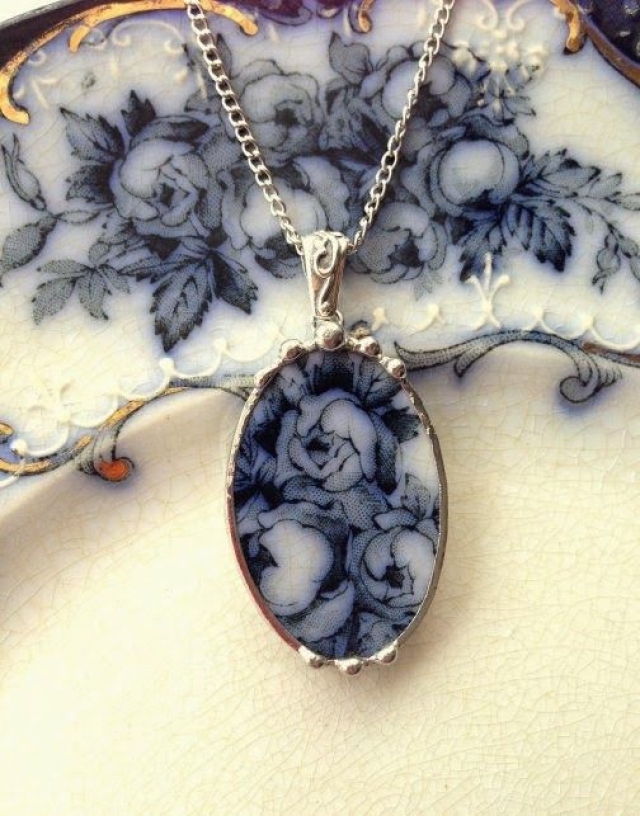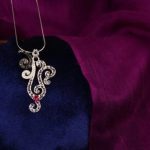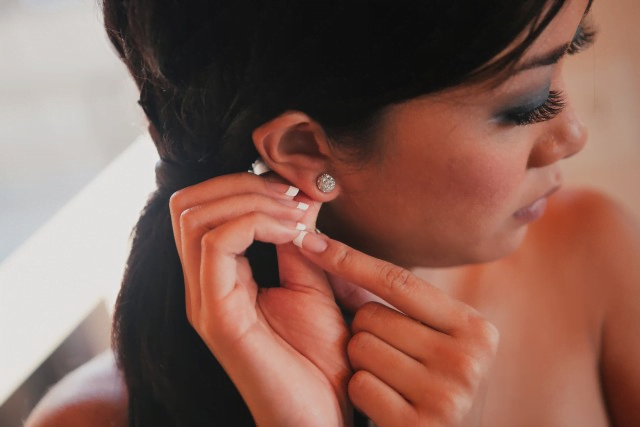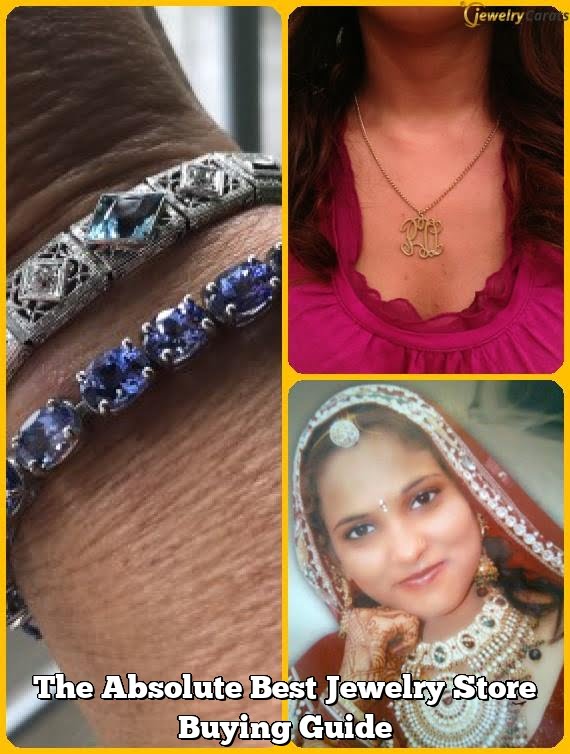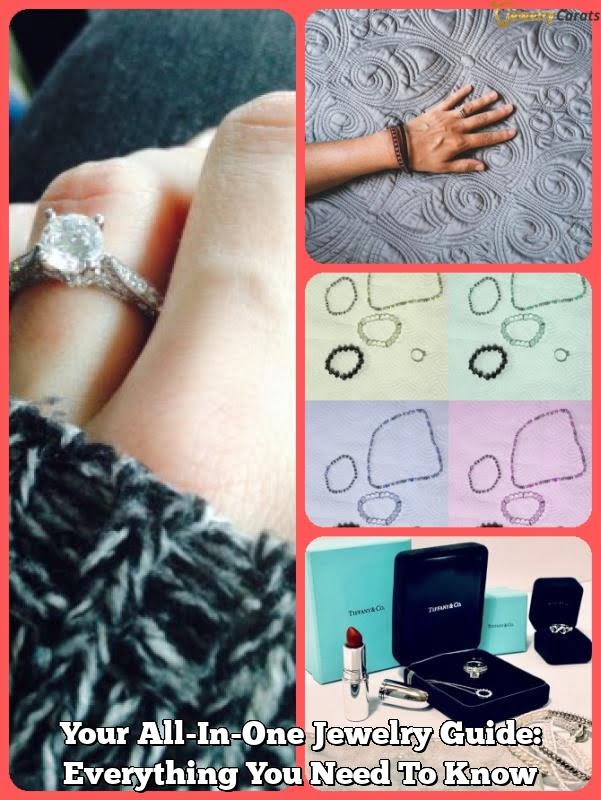Pearls have been a beloved choice for jewelry for thousands of years. They’re luxurious, timeless, and available in a range of styles – but it can be difficult to know what kind of pearl is best for you or your jewelry piece. This guide will provide an overview on what to look for when buying pearl jewelry, from the type of pearl to the value and more.
The first aspect to consider when buying pearl jewelry is the type of pearls you’re looking for. Be sure that the pearls are natural and come from either freshwater or saltwater. Freshwater pearls are smaller than saltwater options, but can feature a greater variety of colors and shapes at lower prices.
Akoya pearls are usually round and between two to six millimeters in size, while Tahitian pearls are often found in grey-green hues and may be up to twelve millimeters in size. Knowing which type of pearl you prefer will help narrow down your search.
The next factor to consider is the quality of the pearl itself; there are several elements that contribute here such as lustre, surface quality, shape, size etc. Lustre refers to how much light reflects off when held against bright light and should be sharp with no dull spots; meanwhile surface quality should be glossy with minimal blemishing or bumps on it that might indicate its age or natural characteristics.
Additionally many people favour symmetrical shapes however some perform better within irregularities due to its unique beauty – this criterion often comes down individual preferences so keep an eye out according their pressence.
Finally it’s important not only think about the price before paying but also consider its resale value; do some research into the other marketed similarly priced items online before committing if possible as it might give insight into future potential earning opportunities if planning on outselling it later on down the line.
Make sure you double check all paperwork as well as provenance that might come with it before doing so – this includes checking authenticity certificates too which will guarantee its originality so don’t support counterfeit markets unwittingly.
Popular Styles of Pearl Jewelry
The idea of pearls has been around for centuries and it’s still one of the most sought-after natural gemstones today. Pearl jewelry features various shapes, sizes, and colors for buyers to choose from when selecting the perfect piece.
Whether you are looking for a necklace, earrings, rings or bracelets there is plenty of pearl jewelry available. To make sure you are getting quality pieces here is a brief guide on popular styles of pearl jewelry that can help you narrow down your buying decision.
The classic look known as “Hematite” is one of the most popular types of pearl jewelry. This style consists of a single strand necklace made with round freshwater pearls in a consistent size and shape. The Hematite strands come in many lengths, ranging from 16 to 36 inches long, so they are easy to wear with just about any garment or style. They can be worn alone or layered with other necklaces to create unique looks for all occasions.
Another popular option for pearl jewelry is the Akoya pearl strand. These strands showcase much larger pearls than the hematite design making them ideal for a statement necklace that really stands out. Akoya strands feature pearls that range from 6mm-10mm in size and are usually strung in graduated sizes along an 18in-32in length strand necklace design. The colors available range from white to cream to silver and these colorful designs will surely add elegance to any ensemble.
For those who prefer something more delicate and intricate then take a look at Baroque pearl strands which are becoming increasingly popular across many fashion circles today. Popularly found in cream and black shades but also in other hues – baroque pearls feature an exquisite sort of irregular shape like oblong ovals or tear drops thus creating unique and interesting patterns along any stranded necklace piece or bracelet made with them.
The irregular shapes can also produce lovely luster so this style is known as being both luxurious yet edgy – ideal to mix & match with more contemporary fashion trends too.
Factors to Consider When Purchasing Pearl Jewelry
Pearl jewelry is a fantastic addition to any woman’s closet. Not only do pearls bring a sense of elegance, but they also look stunning in all types of settings. When selecting pearl jewelry, there are many factors to consider before making the purchase.
The first factor to consider when purchasing pearl jewelry is size and shape. Pearls come in various sizes, from the small “rice” pearls which can be as tiny as 2mm in diameter, up to the larger baroque pearls which can reach over 20 mm in size.
Additionally, pearls can vary in shape; classic round pearls have been the most popular style for centuries, however baroques provide an eye-catching alternative with an irregular or even circular shape. Depending on personal preference and budget, selecting a specific size and shape should be taken into account before buying pearl jewelry.
Secondly, one needs to consider what type or quality pearl they are selecting for their piece of jewelry. Pearls are divided based on four categories: natural (formed independently by mother nature), cultured (created oyster farms), freshwater (found mainly in rivers or lakes) and imitation/synthetic (man made).
Natural saltwater pearls tend to be the most expensive option because of their rarity compared to man-made alternatives while freshwater is often praised for its vibrant color shades such as pinks & purples as well as being relatively affordable.
After making a decision between these options you must then determine what overall look you would like your piece of jewelry to have – whether that be classic string necklace, conservative stud earrings or an extravagant statement bracelet – this decision will affect the price and appeal of your chosen pearl product whether it is natural or not.
Finally when choosing pearl jewelry one must select the final element – metal choice for the setting – this could mark the difference between buying an average product & something truly special. Whether it’s 14k gold, rose gold plated silver of stainless steel – contrasting metals can provide a range of looks from subtle sophistication through sparkling modernity – ultimately choices such as these will quality check on all other layers of the final selection process & leave nothing left unappreciated when finished.
By taking into consideration factors such as size/shape, type/quality and metal choice when purchasing pearl jewelry one can find a beautiful piece tailored perfectly to their individual taste and style.
Variety of Pearl Types
Pearls come in a variety of shapes, sizes, colors, and qualities which can make shopping for them quite overwhelming. To ensure you get the best out of your pearl experience when buying them it is important to familiarize yourself with the different varieties available including Saltwater Pearls (Akoya, Tahitian, South Sea), Freshwater Pearls (Kasumi, Biwa), and Natural Shell Pearls.
Saltwater pearls are typically grown in saltwater oysters off the coast of Japan or China. They come in three main varieties: Akoya, Tahitian and South Sea. Akoya pearls are known to have an intense shimmer and round shape and are usually white or cream in color but can also be found in pink or mauve shades.
Tahitian pearls are darker colored pearls that come from black lipped oysters living around French Polynesia and typically vary between greyish silver to black depending on the color of the oyster shell. South Sea pearls come from large gold-lipped oysters found mainly off the coast of Australia & they tend to have larger sizes than Akoya & Tahitians with warm golden hues ranging from white to deep golds to dark smoky greys & silvers.
Freshwater Pearls stem from mussel species grown primarily in China & they tend to be more irregularly shaped which makes them look like unique works of nature art. Kasumis are medium size freshwater baroque shaped pearls with generally uniform nacre thickness along their surface featuring rainbow luster colours that reflect shades such as purple lavender & even peacock colours. Biwa are larger freeformed multicoloured pearls that often feature one solid tone colour such as deep purples & vibrant blues on an ivory base.
Natural Shell Pearls made mainly from abalone shells feature brilliant luster & iridescent hues ranging from mother-of-pearl pinky peach colours to bright rainbow blues & hues fading into pastel greens – perfect if you’re looking for an unconventional statement piece to add some vibrancy into your collection.
When shopping for high quality natural shell pearl jewelry it is important to pay attention not only its appearance but also its feel – these should never be too soft or too hard as those qualities usually indication that a pearl has been treated chemically for aesthetic effect.
Factors to Consider for Buying Pearls
Before anyone invests in a piece of pearl jewelry, it is important to consider the type of pearl, as well as the intrinsic and aesthetic value. Natural pearls are typically more expensive than artificial or cultured pearls, due to their rare occurrence. You should also research the luster of the material, which is essentially a measure of how reflective it is.
The higher the luster, the better. Another attribute that affects pearl quality and price is the surface texture and whether or not there are any blemishes or irregularities. In addition to this, do some research into what type of maintenance will be needed for your particular purchase; some require more attention than others for upkeep purposes.
In terms of color, you’ll want to consider what type of look you are going for. Are you leaning towards warm colors like peach, rose or gold? Or cool shades like lavender, white grey silver or cream?
There are many different shades available today so make sure to take your time when selecting a hue that suits your individual style and preferences. Size wise, smaller pearls tend to be less expensive than larger ones; however this still depends largely on rarity factor and other previously mentioned attributes.
The shape can also be taken into consideration when looking at pearl jewelry: round, oval, oblong (or drop), button shaped (closely resembling circles but slightly flattened toward one side) semi-baroque (irregularly shaped with no two alike) baroque (strongly asymmetrical shapes) and irregular sizes found mostly in salt water varieties).
Lastly yet importantly do not forget to consider the setting options combinations with metals such as sterling silver rhodium plated gold plate gold filled 14k 14k white etc All these factors should come together to form an overall elegant yet personalized look for your purchase.
Pearl jewelry really can become a lifetime keepsake which can never fail to captivate its wearer due its exquisiteness and timelessness qualities so make sure you invest in something that brings out inner beauty and reflects your personality perfectly.
Caring for Pearl Jewelry
Caring for pearls is a very special task that requires attention and dedicated effort. Natural pearls are quite sensitive, so proper care must be taken to ensure they maintain their strength and beauty for many years. To start, always store pearls in individual compartments of a soft lined jewelry box or pouch.
Avoid contact with hard surfaces such as wood or metal that could scratch the delicate surface of a pearl. It’s also important to avoid exposing the pearls to direct sunlight or excessive heat. Handling the pearls gently is important as well; do not let them rub against any hard surfaces.
To keep them clean, use a damp cloth to freshen up the nacre coating of your pearl jewelry every few weeks – this will restore its luster. Never use any harsh chemicals or aggressive washing products when cleaning pearl jewelry since they may damage them irreparably. If you want to deeply clean your pearls, it’s best to take them to a qualified jeweler who can provide more information on how to do so properly.
When wearing pearl earrings or necklaces, be sure not to spray on any perfumes or hairsprays while wearing the jewelry since these might leave behind residue that is difficult to remove from the delicate surface of natural pearls. After wearing your pearl jewelry, carefully wipe it with a damp cloth prior to storing it away to make sure all dirt has been removed before storage.
Avoid putting on any lotions, make-up or cream prior to wearing your earrings and necklaces since this tends to build up an oil layer on pearls which can reduce their luster in time if left unchecked. Lastly, regular inspection of your pearl pieces will help you notice small damages that may occur over time due to wear and tear – paying attention such issues early increases the chances of being fixed before they get out of hand.
Different Shopping Options
Pearl jewelry is a beautiful classic piece that can be a perfect addition to any wardrobe. It is important to understand the different types of pearl jewelry, where to find it and which one to buy. This guide provides information on the various options available when shopping for the perfect piece of pearl jewelry.
When shopping for pearl jewelry, one of the first places to look is in a store that specializes in pearls, such as a high-end jeweler or online retailer. These stores usually offer the widest selection of quality pieces from all over the world, with some focusing on freshwater pearls and others offering more exotic varieties like akoya and South Sea pearls.
Shopping for pearl jewelry like this will generally cost more than purchasing from a traditional department store but you can be sure that what you’re getting is authentic, of excellent quality and carefully crafted.
Another neat option is to look into buying second hand items. Antique stores often have classic pieces that were previously owned by someone or estate sales can also provide some beautiful options at reasonable prices.
The benefit here is that these pieces come with story and character since they have already belonged to someone before you get them; plus they are often unique gems that won’t be seen elsewhere. Additionally consignment shops may offer older pieces at discounted prices compared to regular retail stores or you could check online classifieds in hopes of finding a special gem at an even better price point.
Finally, if your budget doesn’t allow for something more expensive, many local retailers have new items for sale at fairly reasonable prices-though still higher than what can be found online-and also carry vintage set still in wearable condition but at reduced cost. Discount stores like Dollar Tree may also surprise with beautiful items made with simulated stones or plastic replicas for under $1 so your wallet won’t suffer too much damage either.
Summary
Pearl jewelry can be a beautiful way to accessorize any outfit. It’s elegant, timeless, and adds a lovely touch of sophistication. However, with so many different options available, it can be hard to know what makes one piece of pearl jewelry better than another. That’s where a Pearl Jewelry Buying Guide can help.
A Pearl Jewelry Buying Guide is an invaluable resource for anyone looking for the perfect piece of pearl jewelry. Not only does it provide information on the types of pearls available, such as freshwater and saltwater varieties, but it also offers helpful tips on how to choose quality pearl jewelry that will last for years to come.
A guide like this can make shopping for pearl jewelry easier from start to finish – helping you narrow down your choices and find the perfect piece for you or someone else.
When buying pearls, the most important factor to consider is quality. The best way to know if you’re getting quality pearl jewelry is by looking at the shape and size of each pearl and inspecting its surface for any imperfections or blemishes. If everything looks uniform in size and shape with no visible defects on the surface, then you’ve probably found yourself some great-quality pearls.
In addition to shape and size, colors also matter when selecting your pearl jewelry: look for rich colors which demonstrate good luster area that reflects light consistently throughout the strand of pearls-this indicates that the colors are natural rather than dyed or treated. Finally, don’t forget about determining a fair price; shop around at multiple dealers online or in-store until you find a retailer that offers competitive prices with good customer service.
By following these sights from your Pearl Jewelry Buying Guide you’ll be able to find exactly what you’re looking for while being sure of its quality – allowing you to rest assured that your money was well spent. With an abundance of information available through guides like these available online, there really isn’t any excuse not familiarise yourself with essential knowledge before making any jewellery purchases involving pearls. So take advantage oif this incredibly useful resources now.

Welcome to my jewelry blog! My name is Sarah and I am the owner of this blog.
I love making jewelry and sharing my creations with others.
So whether you’re someone who loves wearing jewelry yourself or simply enjoys learning about it, be sure to check out my blog for insightful posts on everything related to this exciting topic!

